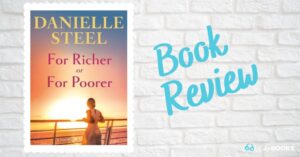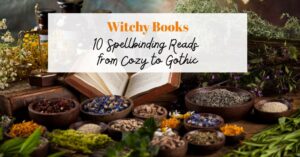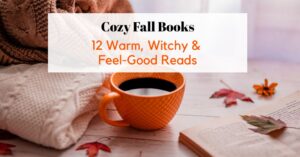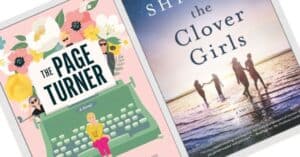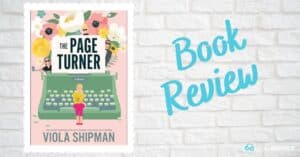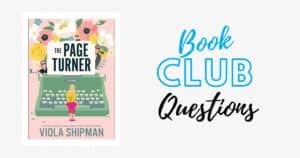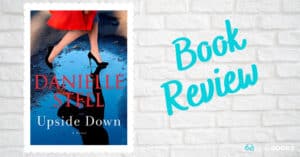Romance Novels: Ultimate Guide to Reading Happily Ever After
Looks Like Books contains affiliate links and is a member of the Amazon Services LLC Associates Program. If you make a purchase using one of these affiliate links I may receive compensation at no extra cost to you. See my Disclaimer to learn more.
If you think romance novels are all fluff and Fabio, it might be time for a re-read.
The world of romance novels is vast, diverse, and packed with far more nuance (and heat) than many people realize. Whether you’re into slow-burn tension, enemies-to-lovers fireworks, laugh-out-loud romantic comedies, or sweeping historical love stories, there’s a romance novel out there for every kind of reader – including those who swear they don’t read romance (uh huh, sure).
This guide will walk you through the many subgenres of romance, highlight some must-read titles in each category, and help you find your next bookish crush. Because let’s be honest – sometimes the best love story is the one that lives between the pages.
Key Takeaways: Romance Novels

Romance Novels Genre – What Exactly Is This?
According to the Romance Writers of America, which is the voice of romance writers themselves, every romance novel or romance book that truly fits within the romance genre will share two specific characteristics.
A Love Story – The main plot of the book will be centered around a love story between two characters. There may be one or more subplots in the book as well, but the main focus will be on this love story.
A Happily Ever After – Romance novels will have an emotionally satisfying outcome or end. Let’s face it – it’s all about the happily ever after.
Other than those two must-have characteristics, romance novels can be just about anything you can imagine. From extremely spicy, sensual, and hot to sweet little nothings with no sex or sensuality whatsoever, and everything in between. As for the book settings, that can be almost anything as well. Romance novels can be set in any place or time, and they can have any tone or style.
Sub-Genres of the Romance Novels Genre?
There are a few different types of books that fit in the romance novel genre, and these are referred to as sub-genres.
There are quite a few romance sub-genres. And they are all quite different from one another. That’s why it’s important to think about what appeals to you in a book. Because not all of the current romance sub-genres may appeal to every single reader.
Main Sub-Genres of Romance
These are the main sub-genres of romance novels, along with several examples in each category.
Contemporary Romance
Contemporary romance novels are ones that are set in a time period from 1950 to the present day. These stories often reflect modern dating dilemmas, career conflicts, or family drama, and always aim for a satisfying, often spicy resolution. Think Emily Henry or Colleen Hoover.
Erotic Romance
These are very, very sexy romance novels! These books feature strong, explicit sexual interaction as part of the love story, and typically include character-driven emotional arcs along with the heat, distinguishing them from pure erotica.
Gothic Romance
Gothic romance books typically feature a distressed heroine and an atmosphere of mystery and suspense surrounding some place the heroine must travel to, like an ancient, dark castle or old manor house. These novels are often set in the late 18th century or early 19th century and are always wonderfully atmospheric.
I feel like there aren’t many new gothic romances in women’s fiction these days, but I did recently find and review a more contemporary version of a gothic. This was Victoria Fox’s The Silent Fountain.
Examples of great gothic romance authors from years past are Victoria Holt and Phyllis Whitney.
Historical Romance
Historical romance books are romance novels set in a time period prior to 1950. Popular time periods include the Regency, Victorian, and Medieval eras, and these books often combine sweeping romance with historical drama.
Paranormal Romance
Paranormal romances are ones where paranormal elements, fantasy worlds, or science fiction are an integral part of the story.
Time Travel Romance
Time Travel romance novels feature one or more characters either going back in time to an earlier period in history or going forward to a later time period.
Time Travel romances are very popular. Diana Gabaldon’s Outlander series is a very well-known example of this genre, and it was developed into a wildly popular Starz series that has had multiple seasons.
Romantic Suspense
Romance suspense novels have a romance that develops as the story goes along, but they also include some elements of suspense, mystery, or thriller elements that are integral to the plot of the book. These books balance love and danger – think of a heroine on the run falling for the gruff detective trying to protect her.
Are There Sub-Sub-Genres For Romance Novels?
In addition to the main romance sub-genres, there are what I call sub-sub-genres. I’m not really sure that’s the correct term or even a term at all!
But what I’m referring to here are certain types of very specific recurring plot themes that you’ll find over and over again in some of the sub-genres mentioned above. There are many of these, and new ones seem to be created all the time. Here are some examples:
Main Sub-Sub-Genres of Romance
These are the main sub-sub-genres of romance. Again, I’m using that term loosely! It’s not an official term. I use it to categorize all the different types of books that I see regularly in the sub-genres of romance novels.
Young Adult Romance
Young adult romance books are written specifically for teenagers and feature a teenage protagonist.
New Adult Romance
New adult romance books are written for the new adult market (think college-age kids) and will generally have a new adult-age protagonist. These stories often focus on coming-of-age themes, like first love, identity struggles, or newfound independence.
LGBTQ Romance
LGBTQ romance novels feature a love story between people of diverse gender and sexual identities. Includes all gender and identity expressions and is rapidly growing in popularity with mainstream audiences.
Romantic Comedy
Romantic comedy romances, or romcoms, feature a love story that combines both romance and comedy genres. These books often lean into quirky characters, mistaken identities, and a whole lot of banter.
Billionaire Romance
Billionaire romance books are romances that feature a hero who is independently wealthy. They are most likely depicted as powerful figures in business and take advantage of the power that having enormous amounts of money can bring. The heroes don’t necessarily need to be billionaires, but they do live a “money is no object” lifestyle. These stories often explore themes of power, control, and emotional redemption beneath the gloss of luxury.
Royal Romance
Royal romance novels feature a prince or a princess of a royal family at the center of a love story. Think Cinderella-type stories and handsome princes that sweep you off your feet! A go-to genre for fans of fairy tale fantasies and modern-day monarchy intrigue.
You might find your own prince charming in one of these books!
Friends to Lovers
These books feature a love story between two people who started off as friends, perhaps years ago, and now their relationship is growing into a love story.
Enemies to Lovers
Enemies-to-lovers romances feature a romance between two people who start off as enemies, and their relationship grows into a love story.
Baby Romance
Baby romances will feature a love story that ultimately includes a baby. Either a secret baby, surprise baby, or some other plot line where two people might not have gotten together except for the fact that suddenly, there is a baby in the mix.
BDSM Romance
Similar to the erotic romance sub-genre, these books will also certainly have strong explicit sexual interaction as part of the love story. But in addition, they will feature BDSM elements like bondage, domination, submission, and masochism. These books often include a consensual power dynamic and explore the psychology of desire within safe boundaries.
Fantasy Romance
Fantasy romance books will feature elements like witches, faeries, or otherworldly creatures along with magical or fictional places or worlds, while at the same time featuring a love story as the central overall theme. These can be high fantasy, urban fantasy, or romantic fairy tales—think A Court of Thorns and Roses by Sarah J. Maas.
So, you see? Romance novels really do come in many different sizes, shapes, and flavors! Some authors even mix things up a bit and write a combination of romantic young adult, new adult, and even psychological thriller books. All by the same author, like Colleen Hoover, for example, who does a brilliant job of mixing those all up.
Holiday Romance
Holiday romance novels are the literary equivalent of a cozy cup of hot cocoa. Most often set around Christmas, these stories are filled with festive cheer, charming small towns, and just enough snow to cause travel delays – and romantic mishaps. Bonus points if someone owns a bakery, runs a Christmas tree farm, or gets stranded during a blizzard.
Sports Romance
Sports romance books typically center around athletes – think football stars, hockey players, or Olympic hopefuls – paired with romantic leads who either support or challenge them in unexpected ways. These stories bring plenty of heat both on and off the field, and the drama often extends beyond the scoreboard.
Second-Chance Romance
Second chance romance is exactly what it sounds like: two characters who once had a spark – or a full-blown relationship – are unexpectedly reunited. Maybe they were childhood sweethearts, maybe one ghosted the other, or maybe fate just had bad timing. But now? They’re getting another shot. Cue the emotional baggage and romantic fireworks.
Original Trailblazers of Romance Novels
OK, how about a trip down memory lane?
If you’re of a certain age and have read romance novels for many years, then you’ll likely recognize some of these authors who are considered to be trailblazing women in terms of the books they started writing back in the 1970s. Little did I know at the time I started reading these books decades ago, that the authors would go on to be wildly successful in a genre that many people wouldn’t admit to reading back then, and still won’t today! Try figuring that one out 🙂
Here are a few of my favorite romance novel trailblazers. Who are yours?
Kathleen Woodiwiss
The NYT Bestselling author Kathleen Woodiwiss is undoubtedly firm in her position as a pioneer when it comes to romance novels, most especially historical romance novels.
Her debut romance, The Flame and the Flower, published in 1972, must certainly go down in history as the beginning of the romance novel movement.
Kathleen Woodiwiss was born Kathleen Hogg in Alexandria, Louisiana, in 1939 and was the youngest of eight siblings. She met her future husband, U.S. Air Force Second Lieutenant Ross Woodiwis,s at a dance and they married the following year. Kathleen wrote her first book in longhand while living at a military outpost in Japan.
The Flame and the Flower was an instant New York Times bestseller that really revolutionized romance writing and publishing by featuring a strong-willed heroine and passionate, steamy sex scenes.
Interestingly enough, the novel was rejected by numerous hardcover publishing houses because they thought it was too long at 600 pages. So what did Kathleen Woodiwiss cut out of the book to shorten it? Nothing! Instead, she resubmitted the novel (all 600 pages) to paperback publishers instead, and Avon Books scooped it up. The rest was history! The Flame and the Flower sold 2.3 million copies in the first four years of publication.
Oops! I wonder what those hardcover publishing houses were thinking then?
Many of the books by Kathleen Woodiwiss became NYT bestselling books, so we have to be grateful that Avon Books agreed to publish that first one.
Rosemary Rogers
Rosemary Rogers, born Rosemary Jansz in 1932 in the British Colony of Ceylon (now known as Sri Lanka), was the eldest child of Dutch-Portuguese parents. Her father was a wealthy educator,r and Rosemary was raised with every possible luxury, including posh schools, servants, and visits to European spa resorts.
Described as a dreamy child, Rosemary wrote her first novel at age 8. But by the age of 17, she became rebellious, and despite her upbringing and the wishes of her parents, she left to attend university and finally took a job as a reporter. One bad husband, an unhappy marriage, and two daughters later, she moved to London, where she met her second husband,d Leroy Rogers. Sadly, that marriage broke up as well, but only after a move to California and the arrival of two sons.
At age 37, the girl who grew up in luxury was left to support 4 children on a typist’s salary. She needed to find a source of income. So Rosemary worked to perfect a manuscript that she had written as a child, rewriting it no less than 24 times. She finally decided she was satisfied with it and sent it to Avon Books. That manuscript became the bestselling novel Sweet Savage Love, one of the most popular historical romance novels of all time.
And just like that, Rosemary Rogers became one of the “Avon Queens of Historical Romance.”
She did marry a third time, but unfortunately, the third time wasn’t the charm. Later, Rosemary was cited as saying although “I’d like to live with a man,” she admits, “but I find men in real life don’t come up to my fantasies. I want culture, spirit, and sex all rolled up together.”
Oh well, I guess it’s hard for real men to measure up to those book boyfriends, right?
Sweet Savage Love was the first book in a series of three, with many more books to come after that.
Bertrice Small
One magazine labeled Bertrice Small as “Lust’s Leading Lady”, so I guess it’s safe to say that Bertrice’s romance novels were a force to be reckoned with. Her first book, The Kadin, was published by Avon Books in 1978. In 1980, her first of six books in the incredible Skye O’Malley Saga was published, and the rest was, well, history!
One of the most interesting things about Bertrice Small is that she was convent-educated in a girls’ school called St. Mary’s, run by Anglican nuns in Peekskill, N.Y. Although it seems unlikely that a convent-educated young lady would end up being a successful writer who is labeled as “Lust’s Leading Lady”, apparently her inspiration for her first novel, The Kadin, came from the family lore of her classmates from Turkey. More specifically, that novel was created around stories that one of her St. Mary’s classmates had told her about her grandmother’s experiences as a member of the harem of the last Ottoman Empire sultan.
Bertrice Small’s books feature strong-willed and virginal maidens as heroines and lustful males as hero characters. Needless to say, their risque encounters throughout each book make for some very steamy reading.
Jude Deveraux
Jude hasn’t been labeled as a “Lusty” author like Bertrice, at least not that I’m aware of. But I still consider her to be one of my favorite romance novel trailblazers.
Jude Deveraux’s first book in the popular Montgomery/Taggert Family series, The Black Lyon, was published in 1978 and became a bestseller.
Many people have a favorite feel-good book that they reread from time to time, kind of like a favorite blanket. Something that they know will give them comfort and which never gets old. My book, which happens to be Jude Devereaux’s A Knight In Shining Armor, is the 15th book in the Montgomery/Taggert Family series.
What’s your feel-good book?
Jude grew up just outside of Louisville, KY, then specialized in fiber arts and ceramics in college, and finally wound up teaching fifth grade. She taught fifth grade for years. During those years, she said she would go to the bookstore every Friday and buy two fat paperback novels and then stay up all night reading them. Obviously, they were romances 🙂 Do you remember how fat those books were?
Anyway, one week the two fat books she read were what she called rape sagas. The hero raped a woman until that woman said she loved him. This got Jude to think about what the perfect plot would be in the perfect book. She started writing it down, paid the neighbor to type the handwritten pages, and just kept on writing. After about two years, she completed the story and (she describes herself as clueless here) simply packed up what she thought was her novel and sent it to Avon Books because they had pretty covers.
Avon Books replied after a month with a request to publish the book and send Jude some money. And the rest, for Jude, was history 🙂 She quit her teaching job and continued writing.
I’m grateful that Jude Deveraux is still with us. She’s alive and well and still writing fabulous romance novels. And, I realized that she’s a world traveler, takes round-the-world cruises for durations of about 4-5 months, and writes while onboard. Whenever I read her work now, I wonder what exotic port she might have been in while writing the page I’m currently on.
Judith Krantz
Judith Krantz is best known for her sexy shopping novels, like Scruples.
Scruples was a smash bestseller and the first in a three-book series about the unbelievably luxurious lifestyle of the people who shop at a Rodeo Drive boutique, the woman who started it, and the people who work for her.
These were present-day novels (at the time), not historical romance novels, and if the phrase “trashy novels” had to refer to any list of books, Scruples and its sequels would have been firmly at the very top of that list.
The depiction of Beverly Hills, the fashion world, and Hollywood all together resulted in a fabulous place to escape for hours, and no list of romance novel trailblazers would be complete without the books of Judith Krantz.
“These were the books that raised us, ruined us, and made us believe in happily ever after — with a whole lot of drama along the way.“
When I think back on when I started reading all of these “Trailblazer” books, I think I was somewhat young. Maybe 16? I will blame that on my older sister, who undoubtedly gave the books to me when she was finished with them. These books were very steamy. Some would refer to them as trashy. Are they appropriate for a teenager? I wouldn’t think so 🙂
Did I like them when I read them in my younger days? Well, hmmm, let’s see. I’m quite sure I went on to read every single book written by these authors, so yeah, I guess so LOL!
Now, I believe it’s time for a reread, and perhaps some reviews! I’m particularly interested in rereading all of Bertrice Small’s books to see if I can wrap my head around what was written by a convent-educated young lady.
Do Men Read Romance Novels?
OK, so let’s be honest. You’re wondering this too, right? Do real men read romance?
Well, yes—they do. Maybe not as many as women, but more than you might expect.
According to data from the Romance Writers of America (RWA), approximately 18% of all romance book readers are men. That means the vast majority of the romance reader base is female, but there’s still a solid slice of guys turning those pages (or swiping those e-readers).
And here’s where it gets even more interesting:
In a 2022 survey by The Romance Reader, when readers of all genders were asked if they enjoy romance novels:
- 63% of men said yes
- 60% of women said yes
So while fewer men read romance overall, the ones who do tend to be just as passionate about it—if not more so—than their female counterparts.
Bottom line? If you’re a guy who loves a good love story, you’re in excellent company. No shame in loving a happily ever after. I guess that answers that. Real men do read romance!
Frequently Asked Questions About Romance Novels
What qualifies a book as a romance novel?
A book qualifies as a romance novel when the central plot focuses on a love story and it ends with an emotionally satisfying resolution, most often a happily-ever-after or happy-for-now.
Are all romance novels steamy or explicit?
Not at all! Some romance novels are very spicy, while others are completely clean and focus more on emotional connection than physical intimacy. There’s something for every comfort level and reading preference.
Is romance considered a “serious” genre in literature?
Absolutely. While romance is sometimes dismissed unfairly, it’s one of the best-selling genres globally and explores themes of love, identity, vulnerability, healing, and hope – serious stuff, wrapped in swoon-worthy storytelling.
Who reads romance novels?
Everyone! Although the core readership has traditionally been women, readers of all genders and ages enjoy romance. From cozy reads to dramatic sagas, romance has a wide appeal.
Can romance novels be part of other genres?
Yes! Many romance novels blend with other genres like fantasy, thriller, historical fiction, or sci-fi. As long as the love story is central and there’s a satisfying ending, it still fits within the romance genre.
Conclusion: Why Romance Novels Are Here To Stay
Romance novels have come a long way since the days of heaving bosoms and rogue pirates – though hey, those can still be fun, too. Whether you love second-chance stories, royals in disguise, or spicy small-town meet-cutes, there’s a romance novel (as well as a book boyfriend) out there with your name on it.
And if anyone ever tries to judge your reading tastes, hand them a pink paperback and say, “Here – educate yourself.”
Got a favorite steamy read or trailblazing romance author? Drop it in the comments or tag us on socials – bookish banter always welcome! 💋
❤️ Did You Know?
The romance genre makes up over a third of all fiction book sales in the U.S., proving readers really do love love.
For Even More Romance, Try Some Of These
If this is your first visit to Looks Like Books, check out our About page so you can learn a little more about me and my Looks Like Books mission.

